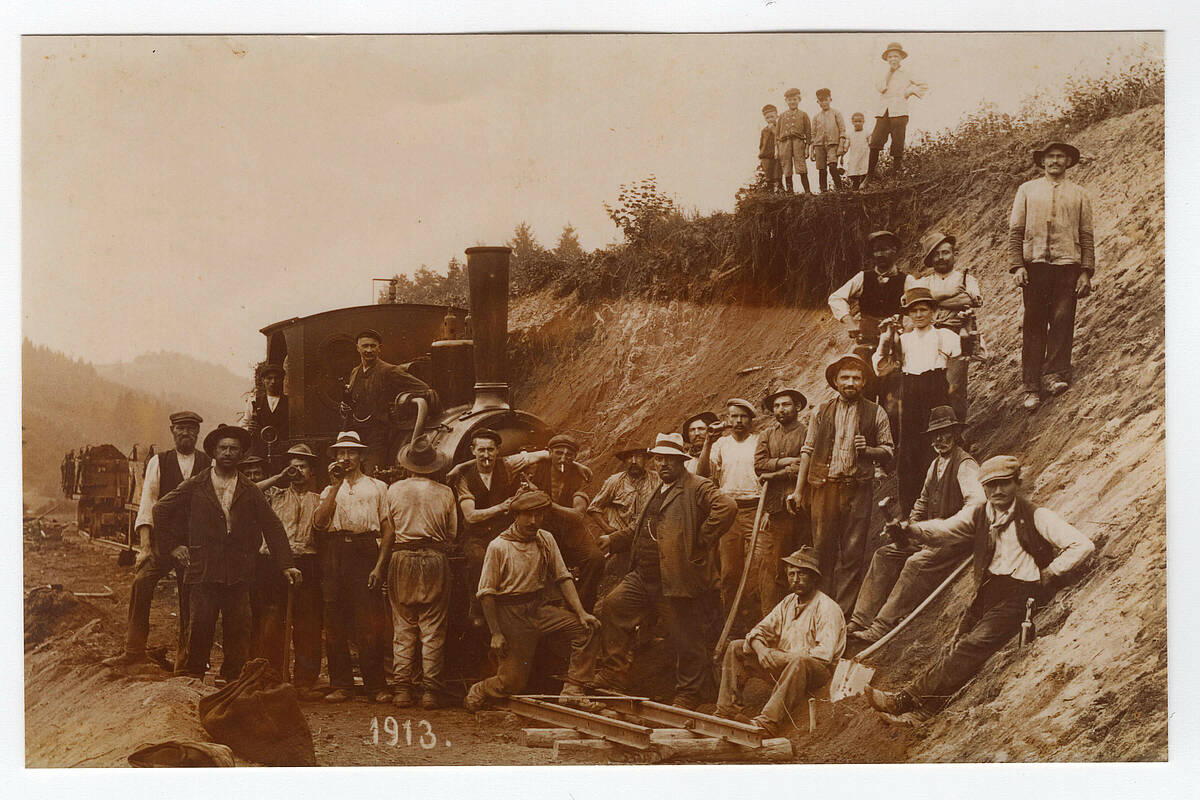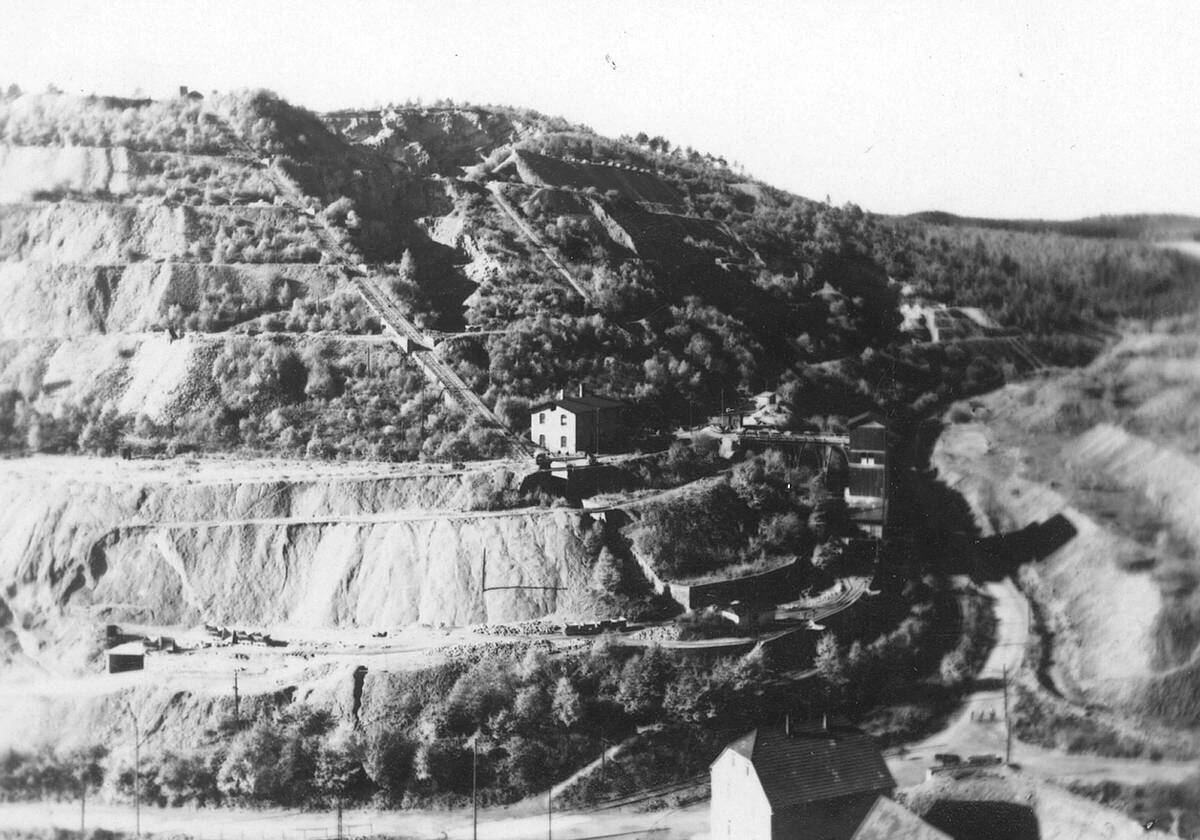For centuries, men were drawn to the quarries of the Bergisches Land. They braved the strenuous and dangerous work and earned a livelihood for themselves and their families.
In the quarries, a division of labour developed that remained valid for the following decades: The clearers removed the rock from the undergrowth and earth and cleared the debris onto large heaps. The pounders levered the stone from the steep slopes and with great effort split it into manageable blocks. Explosives, such as black powder, were also used here. And the tippers – named after their tipping hammers – processed the material into the desired product in front of their open huts. In a 12-hour shift, half a cubic metre of Grauwacke could be processed. The more delicate work was done by the stonemasons. Their works are still preserved today, such as gravestones in the region’s cemeteries. The blacksmiths in their smoky forges took care of the maintenance of the tools.
In the quarries, the stonecutters wore durable corduroy trousers, called “Manchesterhosen”, and sturdy shoes with steel nails and metal caps for traction. Headgear was also part of their self-image. They worked with hammers, including stonemason’s hammers, which are hammers with flat heads on both sides, bush hammers, angles, straightedges, chisels and a variety of pointed and embossed irons.
The oldest surviving work order of a quarry operation dates back to 1892. Bergisch-Märkische Steinindustrie at Brungerst emphasised discipline and order: “improper behaviour towards superiors and colleagues”, “resistance” and “incitement of employees to stop working” were prohibited. “Holding drinking parties at the workplace” was also undesirable.
In the still largely agricultural districts of Gummersbach and Wipperfürth, the over 100 quarry operations were among the most important employers. Along the railway tracks, they lined up like pearls on a string – from small part-time businesses to large corporations. In 1913, more than 2,000 stonecutters obtained and processed over a million tonnes of Grauwacke here. Their working hours were already limited to 10 hours a day by regulation in 1903. This also affected their wages, which were paid according to their weekly output. The employment of women and children was generally forbidden.
For a long time, quarry operations benefited from an army of unskilled labourers. In response to a 1909 work ban on adolescents aged 14 to 16, the Association of West German Quarry Owners wrote a multi-page protest letter. The industry feared “great financial damage” – for the employees and, above all, for their own companies.
In 1890, Italian workers were recruited for the stone industry for the first time. They mainly came from the poor mountain regions of northern Italy, from Belluno, Trentino and Veneto. Before the First World War, these “Transalpini” accounted for about a quarter of all workers. In Carl Kind’s quarry operation in Marienheide-Kotthausen, half of the approximately 500 employees were from Italy. They lived in shared accommodation or boarded with farmers. During the winter months, they returned to their families.
![[Translate to English:] Illustration des Steinbrucharbeiters](/fileadmin/_processed_/7/a/csm_05-Der_Steinbrucharbeiter_14c4f8b01d.png)

